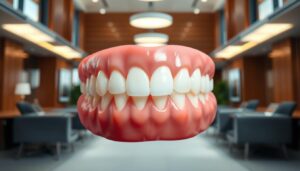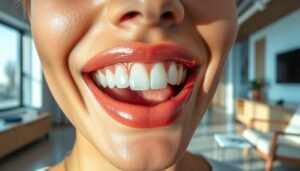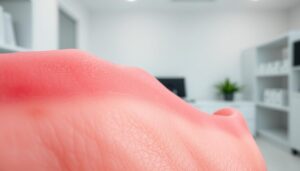Brushing your teeth is a daily habit that most of us take for granted. However, brushing properly is essential not only for keeping your teeth clean but also for protecting your gums. Many people mistakenly think brushing is only about cleaning the teeth, but it’s equally about caring for the gums. In this article, we’ll dive deep into the correct brushing techniques to ensure that your gums stay healthy and protected.
Understanding Your Gums and Their Role in Oral Health
Your gums are far more important than you might realize. They aren’t just there to keep your teeth in place—they also help maintain overall oral health by preventing infections. Gums are made of soft tissue that surround and support the teeth. If you don’t care for them properly, they can become inflamed, infected, or even recede—all of which can lead to significant oral health problems.
Your gums act as a barrier, preventing harmful bacteria from entering your bloodstream. When gums are healthy, they form a strong defense against infections. However, neglecting them can lead to gum disease, which affects your teeth and overall health.
Why Brushing Too Hard Can Harm Your Gums
You might think that brushing harder will get your teeth cleaner, but this could not be further from the truth. Brushing too hard can damage your gums, causing them to recede and exposing the sensitive roots of your teeth. This is why it’s crucial to brush gently.
Aggressive brushing can also wear down your enamel and lead to gum irritation. The pressure you apply while brushing should be gentle, as the goal is to clean—not harm—the delicate tissue of your gums.
The Right Brushing Technique for Healthy Gums
Now that we understand how important it is to be gentle, let’s discuss the proper brushing technique for protecting your gums. The most effective way to clean your teeth while being gentle on your gums is by using a gentle circular motion. This motion ensures that you don’t put pressure on your gums, but still thoroughly clean your teeth.
Additionally, it’s recommended to brush at a 45-degree angle to your gum line. This angle helps remove plaque and debris along the edges where your teeth and gums meet. This approach protects your gums from being pushed back and prevents plaque buildup that can lead to gum disease.
The Best Toothbrushes for Gum Protection
Choosing the right toothbrush can make a big difference in how well you protect your gums. Soft-bristled toothbrushes are ideal because they are gentle on both your teeth and gums. Hard bristles can be too abrasive and may lead to gum recession.
When choosing between a manual or electric toothbrush, both can be effective, but many find that electric toothbrushes are easier to control and more consistent in their brushing motion. Electric toothbrushes also come with built-in timers to ensure you brush for the right amount of time, helping you keep your gums and teeth healthy.
How to Brush Correctly: Step-by-Step
To properly brush your teeth and protect your gums, follow these easy steps:
- Wet your toothbrush and apply a small amount of toothpaste (about a pea-sized amount).
- Hold the brush at a 45-degree angle to your gum line.
- Brush the outer surfaces of your teeth first, using gentle, circular motions.
- Then, clean the inner surfaces of your teeth using the same technique.
- Finally, gently brush the chewing surfaces of your teeth, focusing on the back molars.
Remember to be gentle at all times, as brushing too forcefully can cause irritation to your gums.
Brushing Your Gums: A Step Often Overlooked
Many people focus solely on brushing their teeth, forgetting that brushing your gums is just as important. To brush your gums properly, use the same gentle circular motion and focus on the gum line, where your teeth meet the tissue. This helps remove plaque and debris that can lead to gum disease.
It’s important to never scrub your gums with too much force. You want to stimulate the tissue gently and avoid causing any damage.
Frequency and Timing: How Often Should You Brush?
Brushing your teeth twice a day is the recommended routine—once in the morning and once before bed. It’s important not to skip nighttime brushing, as bacteria accumulate in your mouth overnight, which can lead to gum irritation and tooth decay.
You should also brush after meals when possible, particularly if you’ve eaten sugary or acidic foods, as they can irritate your gums.
How Long Should You Brush for Optimal Gum Health?
The American Dental Association recommends brushing for at least two minutes. This ensures that you thoroughly clean your teeth and gums, giving your gums the attention they deserve.
Brushing for longer than two minutes isn’t harmful, but it’s essential to focus on your technique and not just speed.
The Role of Flossing in Gum Health
Brushing alone isn’t enough to keep your gums healthy. Flossing is just as crucial for protecting your gums and preventing gum disease. Flossing removes plaque and debris between your teeth and along your gum line where a toothbrush can’t reach.
Flossing once a day is sufficient to keep your gums in good shape, but if you struggle with flossing, you can also use interdental brushes or water flossers for a similar effect.
Common Mistakes People Make While Brushing Their Gums
Despite best intentions, many people make mistakes while brushing their gums. Some common ones include brushing too hard, using the wrong type of toothbrush, or not brushing for long enough. If you notice bleeding gums after brushing or experience receding gums, you may need to adjust your technique.
How to Use Mouthwash for Extra Gum Protection
Mouthwash can play an important role in keeping your gums healthy. Antimicrobial mouthwash can help reduce bacteria in your mouth, preventing gum disease and promoting healing. Be sure to swish for 30 seconds after brushing and flossing for added protection.
Signs You’re Brushing Your Gums Wrong
If your gums are bleeding or appear to be receding, it’s a sign that you’re brushing too hard or using incorrect technique. If you notice these symptoms, it’s essential to adjust your brushing method and consult with your dentist.
When to Seek Professional Help for Gum Issues
If you experience persistent gum pain, bleeding, or receding gums, it’s time to visit your dentist. Regular checkups are key to catching gum disease early and protecting your oral health.
Protecting Your Gums Starts with Proper Brushing
In conclusion, brushing correctly is vital for keeping your gums healthy. Remember to use a soft-bristled toothbrush, brush gently, and pay attention to your gum line. Flossing and using mouthwash are also essential in maintaining optimal gum health. By following these simple steps, you can ensure that your gums stay strong, healthy, and free from disease.




